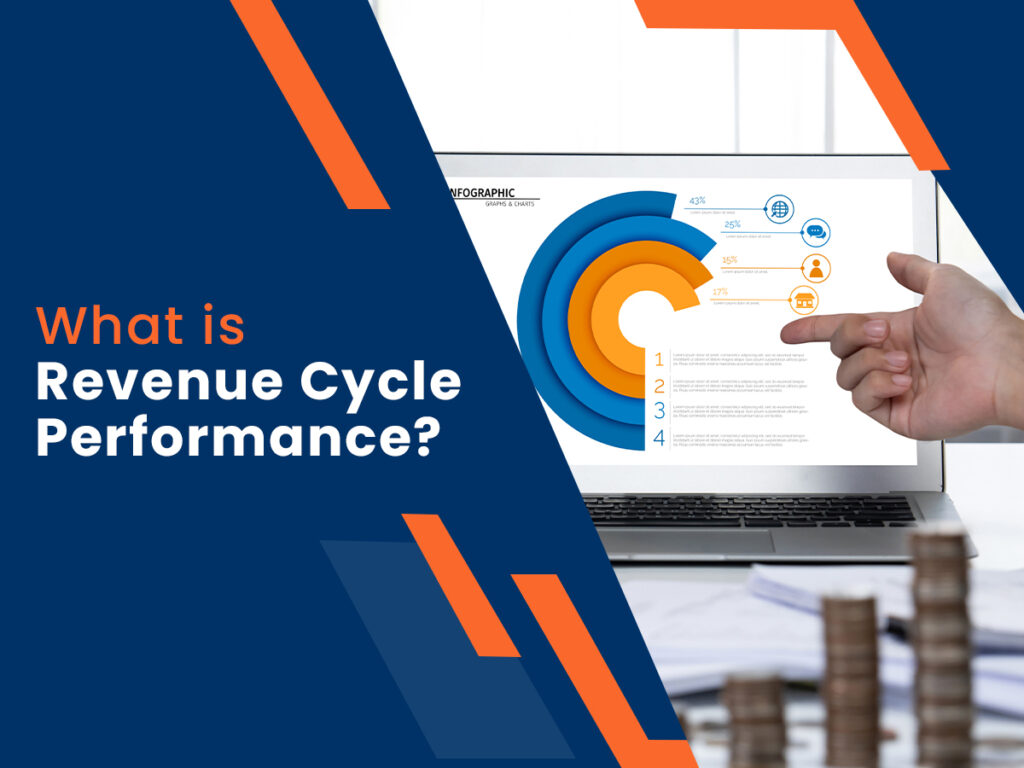Revenue cycle performance is a vital metric in healthcare, encompassing all aspects of managing a patient’s financial journey, from initial registration to final payment. Effective revenue cycle performance ensures that healthcare providers can operate smoothly, minimize revenue losses, and maintain high standards of patient care. In this blog, we’ll explore what revenue cycle performance means, its benefits, common challenges, and key strategies to enhance it.
Why is Revenue Cycle Performance Important?
Improved revenue cycle performance not only helps maintain a steady cash flow but also minimizes errors, reduces claim denials, and enhances patient satisfaction. As healthcare organizations face rising costs and regulatory changes, a strong revenue cycle becomes essential for financial stability and growth.
Key Strategies for Revenue Cycle Performance Improvement
- Streamline Patient Registration and Verification
A smooth revenue cycle starts with accurate patient registration. Verifying insurance details, checking patient eligibility, and confirming demographic information upfront reduces claim rejections and accelerates payment. Implement automated verification tools to ensure accuracy and reduce manual errors.
- Enhance Patient Financial Engagement
Patient financial responsibility has increased in recent years, making it vital for healthcare organizations to engage patients early in the payment process. Offering flexible payment plans, digital payment options, and clear, transparent billing helps patients understand their responsibilities and encourages timely payments.
- Optimize Coding and Billing Accuracy
Coding errors are one of the leading causes of claim denials. Training staff on the latest coding guidelines, leveraging automated coding software, and conducting regular audits can help maintain billing accuracy. Accurate coding not only reduces denials but also ensures compliance with insurance regulations.
- Reduce Claim Denials with Proactive Denial Management
Denial management is essential to revenue cycle improvement. By tracking denial reasons, identifying patterns, and addressing root causes, healthcare organizations can prevent future denials. Implementing an automated denial management system can streamline this process and reduce lost revenue from denied claims.
- Leverage Data Analytics for Performance Insights
Data analytics plays a pivotal role in identifying bottlenecks, tracking key performance indicators (KPIs), and uncovering trends in the revenue cycle. Use analytics to monitor metrics like days in accounts receivable (AR), claim denial rates, and patient payment trends to make informed decisions and enhance overall performance.
- Embrace Technology and Automation
Automation can streamline time-consuming tasks, from patient registration and scheduling to billing and payment posting. By automating repetitive processes, healthcare organizations can improve efficiency, reduce human error, and allow staff to focus on more strategic tasks, ultimately enhancing revenue cycle performance.
- Train Staff and Foster a Culture of Continuous Improvement
Continuous staff training is essential to keep up with changing billing codes, compliance requirements, and industry best practices. Encourage a culture of continuous improvement where employees feel motivated to identify inefficiencies and suggest improvements for revenue cycle performance.
- Focus on Compliance and Regulatory Updates
Compliance with healthcare regulations, such as HIPAA and the Affordable Care Act (ACA), is critical to avoid fines and ensure smooth operations. Regularly reviewing compliance policies and staying up-to-date with regulatory changes can help healthcare organizations prevent costly errors and maintain a well-functioning revenue cycle.
Key Performance Indicators (KPIs) for Monitoring Revenue Cycle Performance
To effectively improve revenue cycle performance, healthcare organizations should monitor specific KPIs. Here are some of the most impactful metrics:
- Days in Accounts Receivable (AR): Measures the average time it takes to collect payments, reflecting cash flow efficiency.
- Clean Claim Rate: Represents the percentage of claims submitted without errors, aiming for a high clean claim rate reduces delays.
- Denial Rate: Tracks the percentage of claims denied, helping identify areas needing improvement.
- Average Time to Payment: Measures how quickly payments are collected from patients and insurance providers.
- Patient Payment Collection Rate: Reflects the percentage of patient payments collected, essential for improving cash flow.
By regularly analyzing these KPIs, healthcare organizations can gauge performance improvements and identify areas for further optimization.
Benefits of Revenue Cycle Performance Improvement
Improving revenue cycle performance offers numerous advantages for healthcare organizations:

- Enhanced Cash Flow: Faster billing and payment collection lead to more consistent cash flow, enabling better financial planning.
- Increased Patient Satisfaction: Simplifying billing and payment processes creates a more positive experience for patients.
- Reduced Operational Costs: Automation and streamlined processes help lower administrative costs.
- Improved Compliance and Reduced Risk: Ensuring coding accuracy and regulatory compliance minimizes the risk of audits and penalties.
- Sustainable Growth: Optimizing the revenue cycle provides a strong financial foundation, enabling growth and adaptation in a rapidly changing healthcare landscape.
Conclusion
Improving revenue cycle performance is essential for maintaining financial health and stability in healthcare organizations. By implementing strategies like accurate patient registration, denial management, leveraging data analytics, and embracing automation, healthcare providers can enhance their revenue cycle performance and achieve long-term success.
Focus on these strategies to streamline processes, minimize errors, and improve patient satisfaction, ultimately building a robust and resilient revenue cycle that supports your organization’s financial goals.



